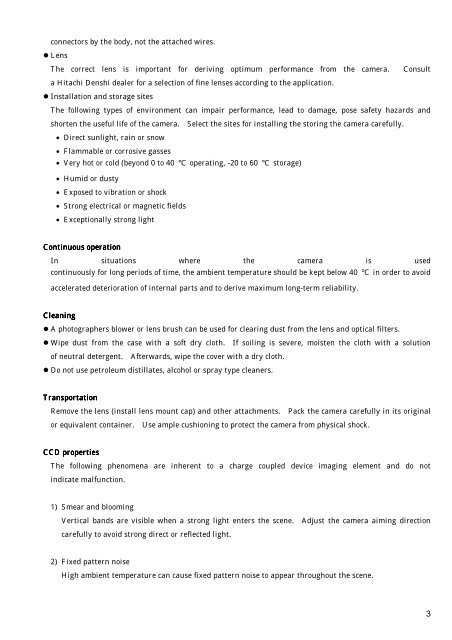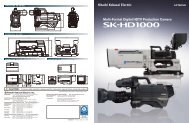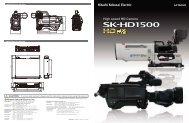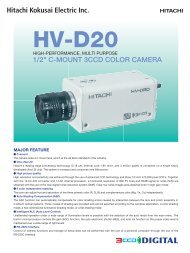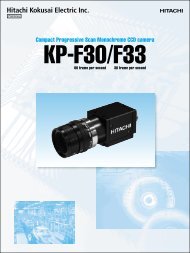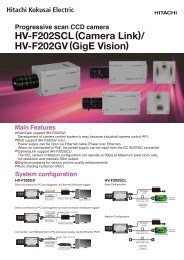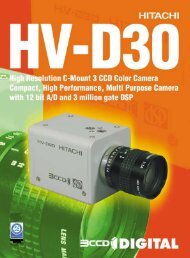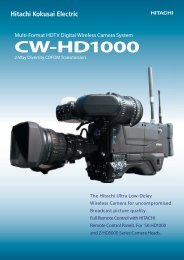IMPORTANT SAFETY INSTRUCTIONS
IMPORTANT SAFETY INSTRUCTIONS
IMPORTANT SAFETY INSTRUCTIONS
You also want an ePaper? Increase the reach of your titles
YUMPU automatically turns print PDFs into web optimized ePapers that Google loves.
connectors by the body, not the attached wires.<br />
• Lens<br />
The correct lens is important for deriving optimum performance from the camera. Consult<br />
a Hitachi Denshi dealer for a selection of fine lenses according to the application.<br />
• Installation and storage sites<br />
The following types of environment can impair performance, lead to damage, pose safety hazards and<br />
shorten the useful life of the camera. Select the sites for installing the storing the camera carefully.<br />
• Direct sunlight, rain or snow<br />
• Flammable or corrosive gasses<br />
• Very hot or cold (beyond 0 to 40 operating, -20 to 60 storage)<br />
• Humid or dusty<br />
• Exposed to vibration or shock<br />
• Strong electrical or magnetic fields<br />
• Exceptionally strong light<br />
Continuous operation<br />
In situations where the camera is used<br />
continuously for long periods of time, the ambient temperature should be kept below 40 in order to avoid<br />
accelerated deterioration of internal parts and to derive maximum long-term reliability.<br />
Cleaning<br />
• A photographers blower or lens brush can be used for clearing dust from the lens and optical filters.<br />
• Wipe dust from the case with a soft dry cloth. If soiling is severe, moisten the cloth with a solution<br />
of neutral detergent. Afterwards, wipe the cover with a dry cloth.<br />
• Do not use petroleum distillates, alcohol or spray type cleaners.<br />
Transportation<br />
Remove the lens (install lens mount cap) and other attachments. Pack the camera carefully in its original<br />
or equivalent container. Use ample cushioning to protect the camera from physical shock.<br />
CCD properties<br />
The following phenomena are inherent to a charge coupled device imaging element and do not<br />
indicate malfunction.<br />
1) Smear and blooming<br />
Vertical bands are visible when a strong light enters the scene. Adjust the camera aiming direction<br />
carefully to avoid strong direct or reflected light.<br />
2) Fixed pattern noise<br />
High ambient temperature can cause fixed pattern noise to appear throughout the scene.<br />
3


